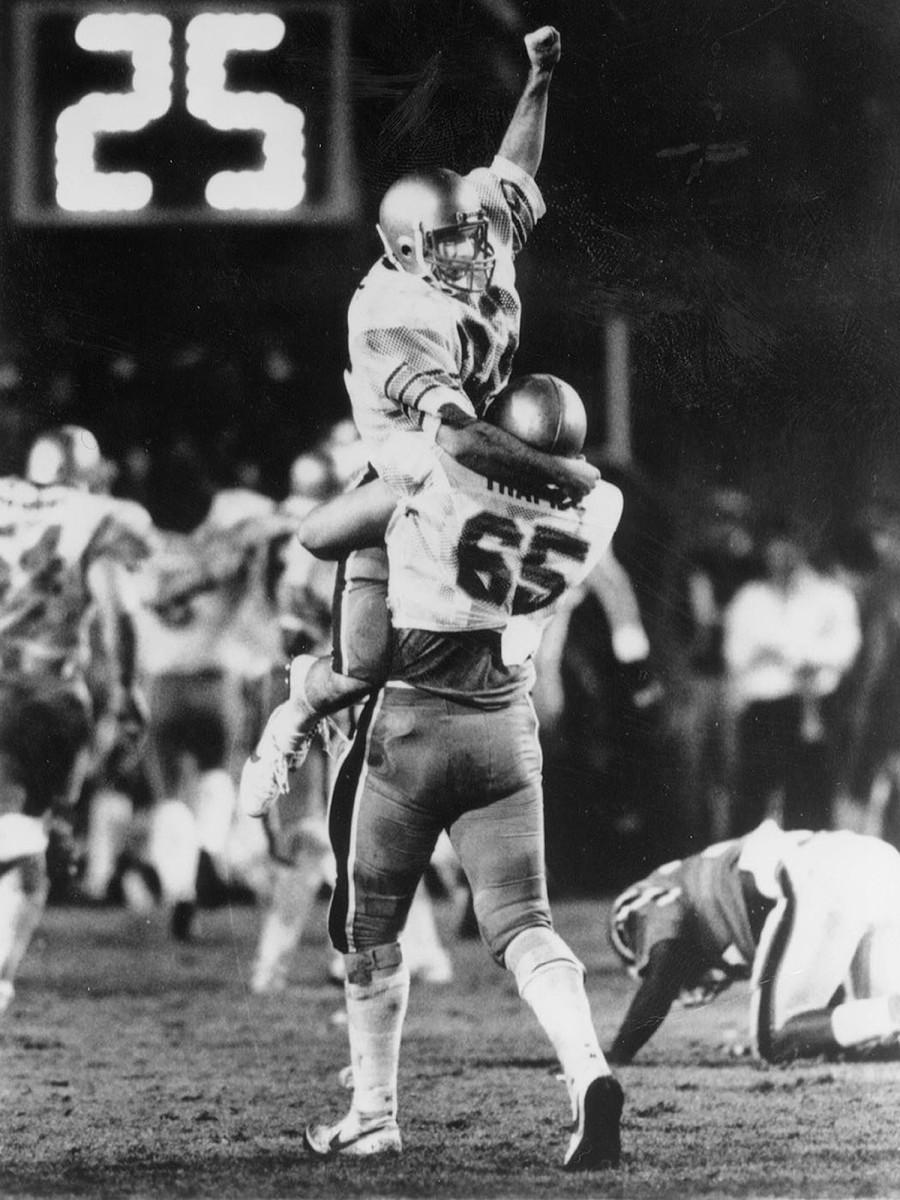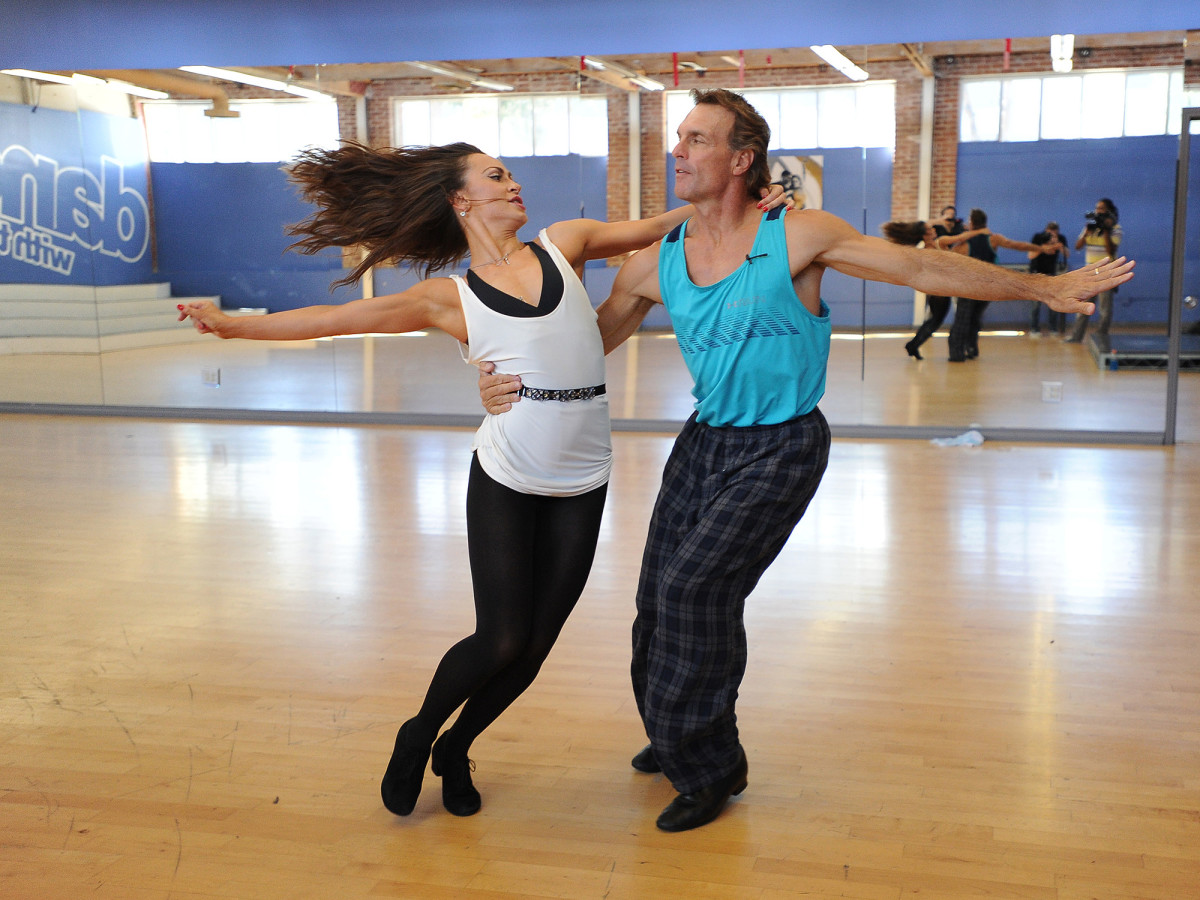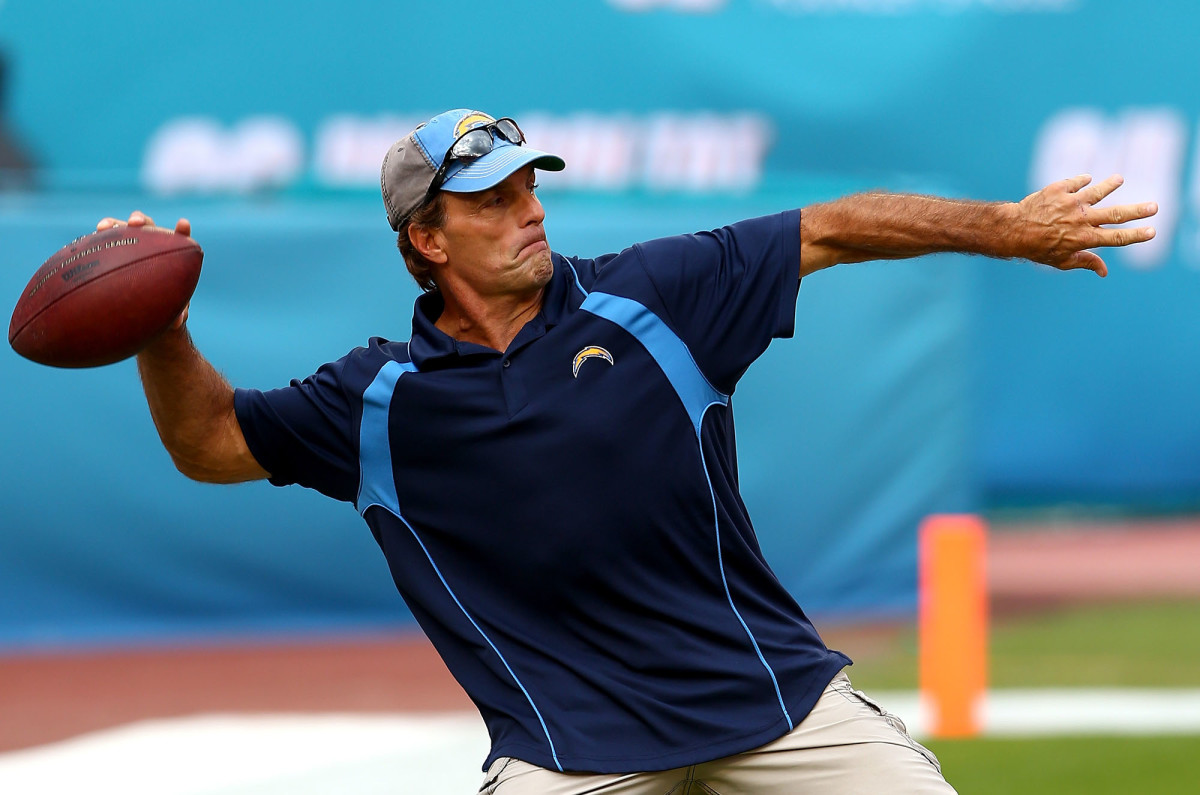Training after 50: How Doug Flutie keeps in shape and manages post-football pains

All-American honors, a Heisman Trophy, a miracle pass and a 21-year career in pro football: those are just a few of Doug Flutie’s incredible athletic achievements. But his 48-yard Hail Mary pass to beat Miami at the Orange Bowl pales in comparison to an even greater feat, a second ‘Hail Flutie’ perhaps, one that took place in San Francisco.
Flutie wasn’t ready to perform this athletic test. He thought he was going to promote the 2001 Escape From Alcatraz triathlon, but instead, his agent had signed him up to participate. The race, one day before he was due to report to San Diego Chargers training camp, involved a 1.5 mile swim from Alcatraz to San Francisco, a hilly 18-mile bike ride along the coast and an eight-mile run that included sand and stairs.

Never one to back down from a challenge, Flutie, battling leg cramps, completed the race despite not having trained for the event.
“It was hard but it showed me what I was capable of,” says Flutie, 54. Though he didn’t give triathlons a second chance, he did give his agent one. “I guess I don’t like change,” says Flutie of the decision.
As was apparent in Flutie’s college, professional and triathlon career, he is still driven by the desire to compete and excel.
Training after 50: Dan O'Brien dispels the myths about exercise for older adults
“I look for competition to motivate me,” says Flutie. “Whether it’s at the gym, running in a marathon or in a competition, I know people are looking at me and I want to be able to show them I’m still an athlete.”
This love of battling himself or a fellow competitor has pushed him to seek new challenges, such as training and competing in an ocean lifeguard challenge and playing adult-league baseball.
Name an activity or sport and chances are Flutie has tried it. Now living in Florida, he surfs and swims nearly every day and his new home is one of the reasons he has gravitated to water sports. The other is that these days, with the aches and pains common to retired football players, Flutie tries to control the impact to his knees and other parts of his body.
But Flutie isn’t content with limiting himself because of a sore knee or tight back, instead finding a way to train for and complete two out of the last three Boston Marathons.
“The challenge is to find things that push me and make me sweat without pounding my joints,” says Flutie. “Because of my knee, it’s difficult for me to run very much when training so I prepare for the race by using the elliptical, swimming and running uphill or in the sand.”

“When you get a diagnosis of arthritis you have two options—you can stop exercise and watch health decline or think about using exercise as the cure,” says Dr. Jordan Metzl, a sports medicine doctor at New York’s Hospital for Special Surgery and author of the soon to be released book Dr. Metzl’s Workout Prescription.
Like Flutie, many older athletes have accumulated injuries over an active life, ones that may make certain types of exercise difficult or uncomfortable. It’s also important to understand that not every tight hip or sore ankle is because of arthritis—often the loss of strength associated with a more sedentary lifestyle can lead to joint and tendon soreness with activity. Unfortunately, stopping all exercise, rather than finding a pain-free substitute, usually has the opposite effect, making things worse rather than better. “The challenge is to find ways to stay strong without aggravating old injuries,” says Flutie.
#https://instagram.com/p/BH2LLEvjmfm
The right exercise program can actually improve the health of the knee’s remaining cartilage. And regular physical activity—specifically focused, vigorous exercise—can keep the muscles around joints strong, decrease bone loss and help control swelling and pain.
“Do more, not less,” says Metzl. “High-intensity exercise and muscle strengthening can lessen the symptoms of arthritis.”
For many older athletes, running is often one of first activities put on the shelf, in the fear that it will hasten arthritis. However, several studies suggest that running does not lead to extra wear and tear of precious cartilage and may actually help prevent the condition. A primary reason for this finding is that the lower average body mass found among runners leads to less strain on the joints. A history of participating in team sports, like football and soccer, where traumatic injuries are more likely, has been associated with a slightly greater risk of arthritis.
“Running is not the devil, as long as you prepare and train differently,” says Metzl. “As long as running doesn’t hurt and normal mechanics can be maintained, running can be a great way to exercise.”

Strength training is critically important because strong muscles can take the pressure off of sore and arthritic joints. Metzl stresses the importance of lower body strengthening, including squats, lunges, burpees and plyometric exercises, which are “important because they build the spring force of muscles.”
For Flutie, it’s all about maintenance. Regularly hitting the gym gives him the strength he needs to continue to pursue his real passion: outdoor exercise. That routine also includes staying flexible, something that Flutie learned the value of after a recent back surgery.
“I would stretch for over an hour in back rehab and when I walked out I would feel a big difference in how I felt,” says Flutie. It’s something for every older athlete to consider, as with aging comes with a loss in mobility and range of motion. But there are always ways maintain function and athleticism. Flutie doesn’t believe that age should have anything to do with slowing down.
“Just because you are older doesn’t mean that you have to stop competing or working out,” he says. “For me, it’s a way of life.”
